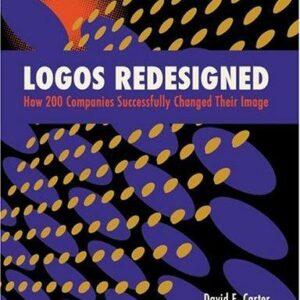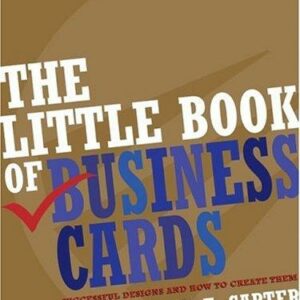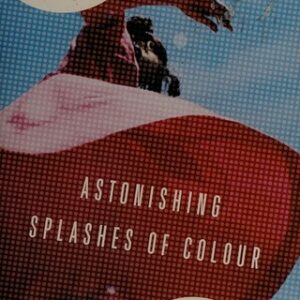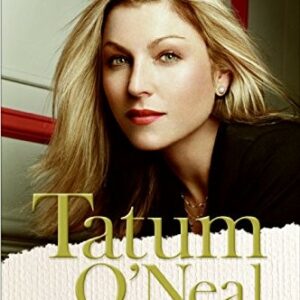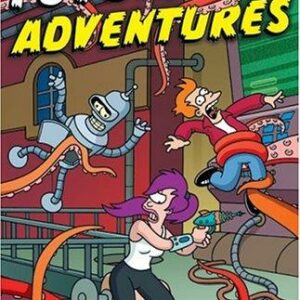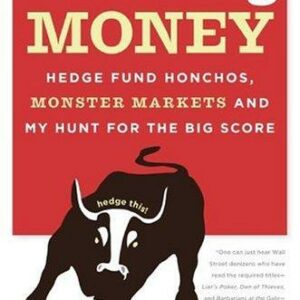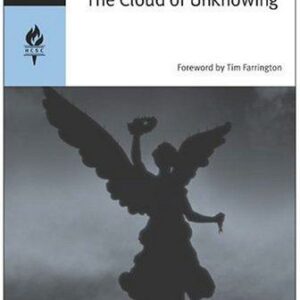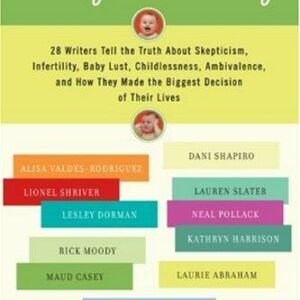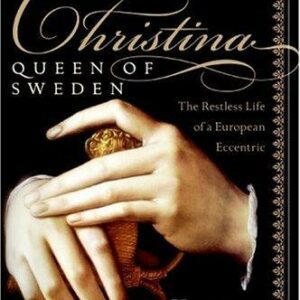Skeleton Keys
$17.00
| Title | Range | Discount |
|---|---|---|
| Trade Discount | 5 + | 25% |
- Description
- Additional information
Description
“A provocative and entertaining magical mineral tour through the life and afterlife of bone.” —Wall Street Journal
Our bones have many stories to tell, if you know how to listen.
Bone is a marvel, an adaptable and resilient building material developed over more than four hundred million years of evolutionary history. It gives your body its shape and the ability to move. It grows and changes with you, an undeniable document of who you are and how you lived. Arguably, no other part of the human anatomy has such rich scientific and cultural significance, both brimming with life and a potent symbol of death.
In this delightful natural and cultural history of bone, Brian Switek explains where our skeletons came from, what they do inside us, and what others can learn about us when these artifacts of mineral and protein are all we’ve left behind.
Bone is as embedded in our culture as it is in our bodies. Our species has made instruments and jewelry from bone, treated the dead like collectors’ items, put our faith in skull bumps as guides to human behavior, and arranged skeletons into macabre tributes to the afterlife. Switek makes a compelling case for getting better acquainted with our skeletons, in all their surprising roles. Bridging the worlds of paleontology, anthropology, medicine, and forensics, Skeleton Keys illuminates the complex life of bones inside our bodies and out.“I sit here now crossing my extraordinary kneecaps… I can see them better thanks to Switek’s keys.” —Rose George, The New York Times Book Review
“Smart, lively, and hugely informative, Skeleton Keys is the ideal guide to the bones around us and in us.” —Elizabeth Kolbert, author of The Sixth Extinction
“A thoughtful, engaging meditation on the origins of the human skeleton, how it functions (or malfunctions) and how we come to terms with our essential but unsettling osseous framework.” —Nature
“Brian Switek writes with remarkable grace about the natural world. In Skeleton Keys, he looks inward, making us keenly aware of the marvels of the bones that give us the scaffolding we need to survive. Every chapter has some surprise, told in elegant tales, that you will repeat to your friends.” —Carl Zimmer, author of She Has Her Mother’s Laugh: The Powers, Perversions, and Potential of Heredity
“[Switek] compellingly evokes the sheer wonder and complexity of the supporting framework inside you—and the murky human responses it arouses.” —Science
“From touring the famed Mutter Museum and London ossuaries, to ferreting out what really happened to Richard III, Skeleton Keys is a lyrical love letter to the 206 or so bones in the human skeleton and the colorful figures who have studied them over the centuries.”—Jennifer Ouellette, author of Me, Myself, and Why and The Calculus Diaries
“Skeleton Keys is an absorbing tour through the world of bones and the bones of the world. Considering in turn dinosaurs, saints, kings, and our own possible future, it is an assured and revelatory book.” —Maryn McKenna, author of Big Chicken and Superbug
“A cheerful popular-science romp through the matter that makes up our skeleton…. leaves the beaten path to deliver a fun explanation of the history, function, and cultural meaning of bone.” —Kirkus Reviews
“Informative, contemplative, and even lyrical, Switek’s work is popular-science writing at its best.” —BooklistBrian Switek is the pen name of Riley Black, a collection of 206-some-odd bones and associated soft tissues. She is also the author of the books My Beloved Brontosaurus and Written in Stone, as well as the Scientific American blog Laelaps. Her bylines have appeared in National Geographic, Smithsonian, Wired, Slate, The Wall Street Journal, Nature, and other publications. She lives in Salt Lake City, Utah.Introduction
CUT TO THE BONE
When Geza Uirmeny decided to take his own life, he turned to a blade. Precisely what was tormenting the seventy‑ year‑old Eastern European shepherd is a secret kept by his remains. The tiny placard affixed beneath his toothless skull in a cabinet of wood and glass at downtown Philadelphia’s Mütter Museum doesn’t say whether it was financial stress, heartache, or any of the other painful circumstances of human life that led him to choose his own way out. But the postmortem grin formed by his jaws speaks to what happened next.
What Uirmeny didn’t know when he raised the cutting edge to his neck was that part of his throat had transformed to bone. This happens to everyone to a greater or lesser extent. The flexible carti‑ lage of your larynx—the ringed tube that gives you that distinctive part of yourself, your voice—slowly but surely starts to change as you age, rigid bone cells growing in place of the more pliant flesh.
Uirmeny’s tissues were a little more ambitious than most. As he swiped the blade across his neck, he met unexpected resistance. His larynx had been so transmuted that it formed a bony strut in his neck; in the more clinical terms of the Mütter Museum’s signage, “Wound not fatal because of ossified larynx.” That little note doesn’t record what Uirmeny felt when he realized his failure, but the scar that must have formed on his neck was a mark of a happier ending. Uirmeny, the display says, “lived until 80 without melancholy.” Bone saved Uirmeny’s life.
The lucky herdsman’s skull is one of 139 in the Hyrtl Skull Collection exhibit, the last resting place for dozens of people who perished during the second half of the nineteenth century in Central and Eastern Europe. Each skull has its own story, recounted in a passive voice shorthand that makes the collected tales swing between the somber and the tragicomic. There’s the bony grin of Francisca Sey‑ cora, a nineteen‑year‑old Viennese prostitute who died of meningi‑ tis, next to that of Veronica Huber, a woman executed for murdering her child. They share the space with rail workers, fishermen, ban‑ dits, soldiers, and the unidentified dead, as well as a few stranger cases. There’s the cranium of Andrejew Sokoloff, a member of an extreme religious sect who died following the order’s dire require‑ ment of self‑emasculation; and the skull of Girolamo Zini, a twenty‑ year‑old tightrope walker who, the museum’s deadpan delivery tells us, “died of atlanto‑axial dislocation (broken neck).”
These crania aren’t the only bones in the Mütter’s expansive and historic collection. In addition to housing slices of Einstein’s brain and larger‑than‑life replicas of every eye injury imaginable, which sympathy pain prevented me from giving any more than a sideways glance, the Mütter Museum is home to the towering skeleton of the Mütter American Giant, the remains of a woman so tightly corseted for so long that the garments changed the very structure of her bones, and dozens of other people whose final act is to educate the rest of us about what lives inside. This is a place populated by the remarkable dead, a medical mausoleum with a nineteenth‑century aesthetic that would make a Victorian‑era anatomy student feel right at home. There’s more than a touch of the gothic about the rows of cases, not to mention a sinister feeling that you, too, might have been eyed for an exhibit had you lived during the museum’s heyday—anatomists of old would often let their ethics slip if it meant acquiring another remarkable specimen for their cabinets. These bones have taken on a second life, and that’s part of the story as much as the lives stripped down and presented among the cases and shelves. Every bone in the collection embodies a tangle of stories leading from the present back through history, and deeper still through the millions of years of evolutionary assembly that made us into our present and still‑changing form. In each skeleton, whether that person was privileged or poor, healthy or afflicted, there are stories of varied and resilient life.
Admittedly, I hadn’t paid very close attention to human bones before my visit to the Mütter that cold February morning. My affec‑ tion for bones had its origin in paleontology.
I lived just an hour from the Mütter for most of my life, and I al‑ ways promised myself I’d visit at an unspecified sometime. When I found myself with enough time and cash to visit a museum, though, I’d always opt instead to go north on NJ Transit to visit the hulking frames of dinosaurs and other prehistoric oddities in Manhattan’s American Museum of Natural History. Petrified bones of all shapes and sizes fascinated me, even more glorious raised and reconstructed in their life positions.
That enduring affection led me to settle in the American West, where I spend weeks out of each summer helping museum and uni‑ versity field crews dig up fragile bones that throw open windows to lost worlds. It’s difficult work. Out in the desert, science is a matter of stomping around crumbling outcrops in search of pieces of pre‑ historic lives that have miraculously survived to the present, using pick, shovel, brush, and plaster to uncover and cradle old bones before using whatever strength you can muster to drag them out of their natural tombs. All that manual labor offers plenty of time to think, of course, and the endless stream of questions that bones in‑ spire helps those wracked with fossil fever endure sunburn, gnat bites, dehydration, and cactus needles that seem to know the exact weak spot of your boots.
What was this creature? What did it look like? How did it move? What did it eat? These are puzzles that can be answered through bone. Each element has stories to tell, a record of the organism’s life wrapped up in its skeleton. To the paleontologist, bones are not grim visages of death. Skeletons are biological time capsules that tell us of lives we’ll never see in the flesh. A tooth. A string of vertebrae. An osteoderm that once acted as bony armor inside the skin. These were all living tissues that had to grow and were constantly changing within the bodies of the animals they once belonged to. Even the ti‑ niest, most boring fragment of unidentifiable Chunkasaurus gradu‑ ally turning to powder beneath the unforgiving sun is a vestige of a life come, gone, and preserved for a span of time that’s impossible to truly understand. It’s difficult to push away thoughts about life while facing death. This is as true for us as it was for Tyrannosaurus.
Gently, insistently interrogating the remains of long‑dead crea‑ tures makes every tidbit of information drawn from their skeletons a treasure. We don’t get to see them in life, so bones are most of what we have. (Tracks and traces form a supplement to the skeletons.) The entire paleontological discipline is based on resurrecting the ex‑ tinct, if only in our minds.
With our own bones, though, the connection flips. We intimately experience life and are familiar with all the squishy tissues that skel‑ etons support. With the knowledge of the living, then, the meaning of human bones is often pulled inside out. A skull is a death’s‑head, reminding us of what awaits us all. “As I am now, so will you be. As you are now, so once was I.” That’s what human skeletal remains re‑ peat to us over and over again. Just think of where we see skeletons and skulls around us. A skull and crossbones marks the menacing flutter of the Jolly Roger. A similar symbol warns us we’ll die if we’re careless about what containers we drink from. Heavy metal album covers are rife with skeletons, as are the ranks of fictional villains, from Skeletor to the bony army in The 7th Voyage of Sinbad. Tat‑ tooed onto my left forearm, a werewolf grips the skull of one of her victims in an anthropomorphic memento mori. Even Death itself comes to us as a robed skeleton. One of the few positive cultural as‑ sociations with skeletons we seem to have is the Mexican Dia de los Muertos, a holiday when sugar skulls and other osteological adorn‑
ments help keep the living in touch with the memory of those who
have left us. But that’s largely an exception to our modern relation‑ ship with bones. While prehistoric remains represent life resurrected and reassembled, we often think of our own bones as potent sym‑ bols of the afterlife and what misfortune may come to snatch us away into it.
Still, deep down, we can’t escape the fact that bones are the most vital of structures. They form the foundation of our lives from the outset. We don’t squeeze out of our mothers fully formed, all of our 206‑some‑odd bones in place. No, when we start life our bones still have to fully ossify and fuse, years and years of development and growth ahead of us that will alter our skeletons as the years tick by. Our bones change throughout our childhood and adolescence, eventually bringing us to our full stature, and if we’re lucky enough to reach old age, they can even turn against us, resorbing themselves before we’re finished using them. These changes don’t happen in fits and starts. Bone is always being altered. Even now, as you’re reading this, specialized, voracious cells are eating up old bone as other cel‑ lular blobs are creating new bone cells, recycling your body from the inside. So even though there’s a useful distinction between flesh and bone, it really only comes down to soft versus hard. Bone is every bit as lively and responsive as the skin that hides all the muscle and gore draped around your skeleton.
Bone, in scientific jargon, is “a vascularized tissue consisting of osteocytes with multiple interconnecting processes, embedded in an extracellular matrix, mineralized with hydroxyapatite, and contain‑ ing type I collagen.” Like many scientific definitions, this manages to be correct and totally miss the larger point at the same time. Yes, bone is a durable, mineralized tissue made of a hard part and a flex‑ ible part, but it’s also one of the most fantastic building materials that evolution has accidentally spit out. In us bone is a structural core, giving our bodies support while also acting as a foundation for our flesh and internal protection that wraps around our vital organs. It never moves by itself but is essential to our ability to move. Bone has manifested itself in wings, sails, horns, armor, and an even greater array of appendages and ornaments that have been accumulating since the time of its origin. Bone is the vital stuff that made possible something as small as the 0.6 inch‑long Jaragua lizard—as tiny as a raindrop—as well as the 110‑foot‑long dinosaur Supersaurus and the 190‑ton blue whale, the largest animal to have yet evolved. Stomp, fly, swim, slither, dig, run—all are expressions of what bones make possible. But that’s hardly all.
Science has a habit of reducing the complex and nuanced to the narrow and then working back up to the broader picture. That’s part of how we construct a way of thinking about the natural world. We need constant, agreed‑upon definitions in order to organize and understand. But winnowing down an observation or idea to its pur‑ est and most minimalistic form isn’t always wise. John Steinbeck pointed this out long before I did. Reflecting on his time floating along the Sea of Cortez with legendary marine biologist Ed Ricketts, Steinbeck wrote that a scientist could easily look at a fish like a Mex‑ ican sierra and boil that animal down to measurements and notes on spine count. But that wouldn’t really capture the whole truth of the animal. Both the quantifiable aspects of the animal and the poetic, elusive nature of its existence are needed. “We determined to go doubly open so that in the end we could, if we wished, describe the sierra thus: ‘D. XVII‑15‑IX, A. II‑15‑IX,’ but also we could see the fish alive and swimming, feel it plunge against the lines, drag it threshing over the trail, and even finally eat it.” So it is with us, and our bones. We can define bone by its biochemical components, its evolutionary history, its shape and variation, but to boil down bone to numbers, measurements, or landmarks will always seem incom‑ plete. It doesn’t matter whether we’re talking about a skeleton do‑ nated to a museum, a skull stolen from a grave, or even a bone chip left weathering to nothing out on the ground. The truth of the bone very much depends on who’s looking at it, and our skeletons are as embedded in our culture as they are in our bodies. Our species has made instruments and jewelry from bone, treated the dead like collector’s items, put our faith in skull bumps as guides to human behavior, arranged skeletons into macabre tributes to the afterlife, and more.
While bone itself can tell our individual stories, we’ve also woven our changing relationship with our intimate osteology into our wider history. (Osteology being the study of bones. If you see the prefix osteo, you know you’re dealing with something involving skel‑ etons.) To borrow a term from paleontology, there is a stratigraphy of stories surrounding bone—layer upon layer of detail that tells us who we are and where we came from. All it takes is asking the right questions.
That’s where my own journey started. Dinosaurs and saber‑ toothed cats initially drew my attention to bone—how could they not?—but I wanted to let my curiosity approach humanity in the same fashion as it did my favorite petrified monsters. I had mostly ignored human bones in my research and writing—stripped down, we just can’t compete with the grandeur of something like Stegosaurus—but my ignorance kept itching me. If I didn’t know human skeletons, I didn’t really know myself. I wanted to remedy that, and other skeletons had already given me a blueprint for doing so. After all, we’re all built on the same osteological chassis with many of the same parts, inherited from a common fishy ancestor that binds vertebrates together into one great family. It follows that the same approaches to understanding other forms of vertebrate life can be turned onto us, too, allowing us to tease apart the layers of what our bones tell us about who we are, where we came from, and the constant identity crisis that comes part and parcel with being human. After all, we are not separate from nature but an es‑ pecially unusual manifestation of it. I wanted to take the same ap‑ proach to the bones in my body as I would the burly frame of a mastodon or the threatening bulk of an Allosaurus. Perhaps in doing so, I could begin to understand where I fit in among life’s fantastic skeletal menagerie I so admire. That drive led me to the stories I’m about to share with you.
What I want to do, in essence, is cut down to the bone. I have a deep affection for that osteological expression. You can be dry as a bone, be reduced to a bag of bones, pick a bone of contention, and, in exasperation, ask to be thrown a bone, for starters. But there’s something more visceral about cutting down to the bone, slicing through to the underlying truth of something. The flesh can, and often does, lie. It’s easily malleable stuff. Untruths spring from our squishy brains and chicanery is carried out by the push and pull of all those soft tissues. But bone remains pure, forming the very core of us. Perhaps it’s the idea of dissecting away everything else, reduc‑ ing ourselves to our struts and supports. What better example of hard fact than bone itself?
Not that the denuded truth is easy to look at. Coming face‑to‑face with what’s inside you can be a haunting experience. A skeleton is a final and everlasting snapshot of concluded vitality, reminding us of our bodies’ eventual conclusion. Skulls bring us face‑to‑face with this fate. Peering into glass museum cases to look into empty sockets that once held expressive eyes, I can’t help but flinch. In those unset‑ tling and tense moments, we remember that we are not just viewing objects—these were, and still are, people. And that’s hardly all. Cut‑ ting through biology, history, and culture to understand the mean‑ ing of what’s inside us isn’t always a pleasant experience. As we get closer to the bone, there may be some parts of ourselves we don’t wish to see, and others that challenge our preconceptions of who we are. Much of what we used to so fervently believe about bones has turned out to be wrong. Reliquaries holding the remains of the holy have become the stuff of myth and legend, especially given how many of them do not contain the genuine remains they’re supposed to preserve. We no longer look to skulls for signs of whether or not someone has a criminal disposition. And, contrary to what some an‑ thropologists of generations past so fervently believed, vast collec‑ tions of skulls accumulated in the name of science have shown that race has no biological meaning, creating a spectrum in place of the finely divided categories craniometrists were so certain existed.
It was never the bone itself that led us astray. Bald facts mean nothing without interpretation, and those hypotheses and analyses and arguments tell us just as much about ourselves as the bones themselves.
In the course of writing this book, I’ve inadvertently made myself a speaker for the dead, though I’ve tried to turn the narratives over to the original owners of those bones as much as possible. That’s the responsibility of telling stories, even as the result ends up a tale that’s as unique as my own skeleton. Bone is alive, wondrously and vi‑ brantly so. Every element holds clues about the lives we lead. Human bones are not inert objects or curios, but were once part of people who had their own ideas, values, and beliefs. We intersect with them more powerfully than any osteological part of any other species. This is a wellspring of both wonder and terror, the pivot point bones occupy in our lives and culture.
Naturally, I felt most comfortable starting in the distant prehis‑ toric past, long before human skeletons—or even bone itself— existed. We need to briskly stroll through the hundreds of millions of years in which our skeletons were assembled to understand how we came to be as we are. It’s a humbling experience to look back in time and realize that there’s no inevitability to our existence, especially when for so much of our history we’ve tried to convince ourselves that we were specially made for this world. From there we’ll slide into the biology of our skeletons—the nature of our bones, what they can and cannot tell us when stripped of flesh. This leads us to the marvelous abilities of our skeletal system—how our complement of bones work together to let us move, and how they respond to inju‑ ries and afflictions imposed from the inside and out. This is the life of our bones. But human skeletons have historically had incredibly active afterlives. Human bones have been objects of worship, con‑ quest, and curiosity for longer than we’ll ever really know. They’ve been used to both honor and denigrate the dead, from the origins of religion through the genesis of science and up through this very day. And considering how our bones have the potential to be the most lasting parts of us, we’ll leave the story considering how bones are
the legacies we leave behind. They are the only parts of us that have a chance of telling others about our lives millions of years after all our earthly works have turned to dust, when we’re prehistoric crea‑ tures ourselves, as dead as the dinosaurs.
Bones are totems of enduring life. They testify to more than five hundred million years of evolutionary history, documenting resil‑ ience and survival against the odds. They grow and change, acting as osteological recorders as they do so. And through our interpreta‑ tions of what they mean, they reveal the best and worst of us. Within us are more stories than we will ever fully realize. Now, listen.US
Additional information
| Weight | 9.2 oz |
|---|---|
| Dimensions | 0.7200 × 5.4900 × 8.2200 in |
| Imprint | |
| ISBN-13 | |
| Author | |
| Audience | |
| BISAC | |
| Subjects | Skeleton Keys, sociology books, skeletons, skeletal, richard iii, human evolution, anatomy book, evolutionary psychology, evolutionary biology, SOC002000, Brian Switek, Skeleton Key, bones, human remains, death rituals, broken bones, bone books, osteology, ossuary, skulls, fossil record, bone book, gifts for geeks, archaeology, science, biology, death, Sociology, Afterlife, evolution, blood, bone, human body, human anatomy, anthropology, paleontology, fossils, anatomy, natural history, science books, physiology, skeleton, forensic, phrenology, SCI027000 |
| Format |



